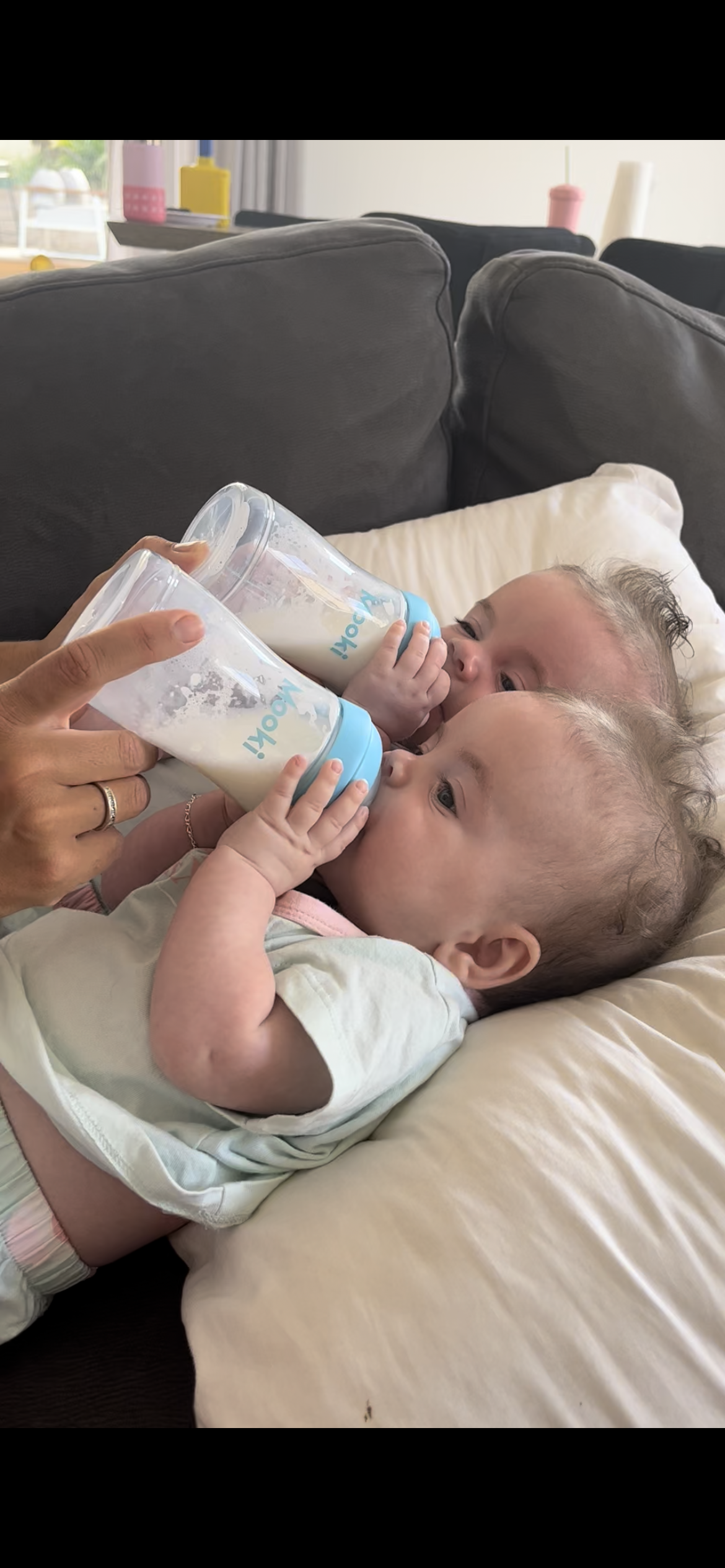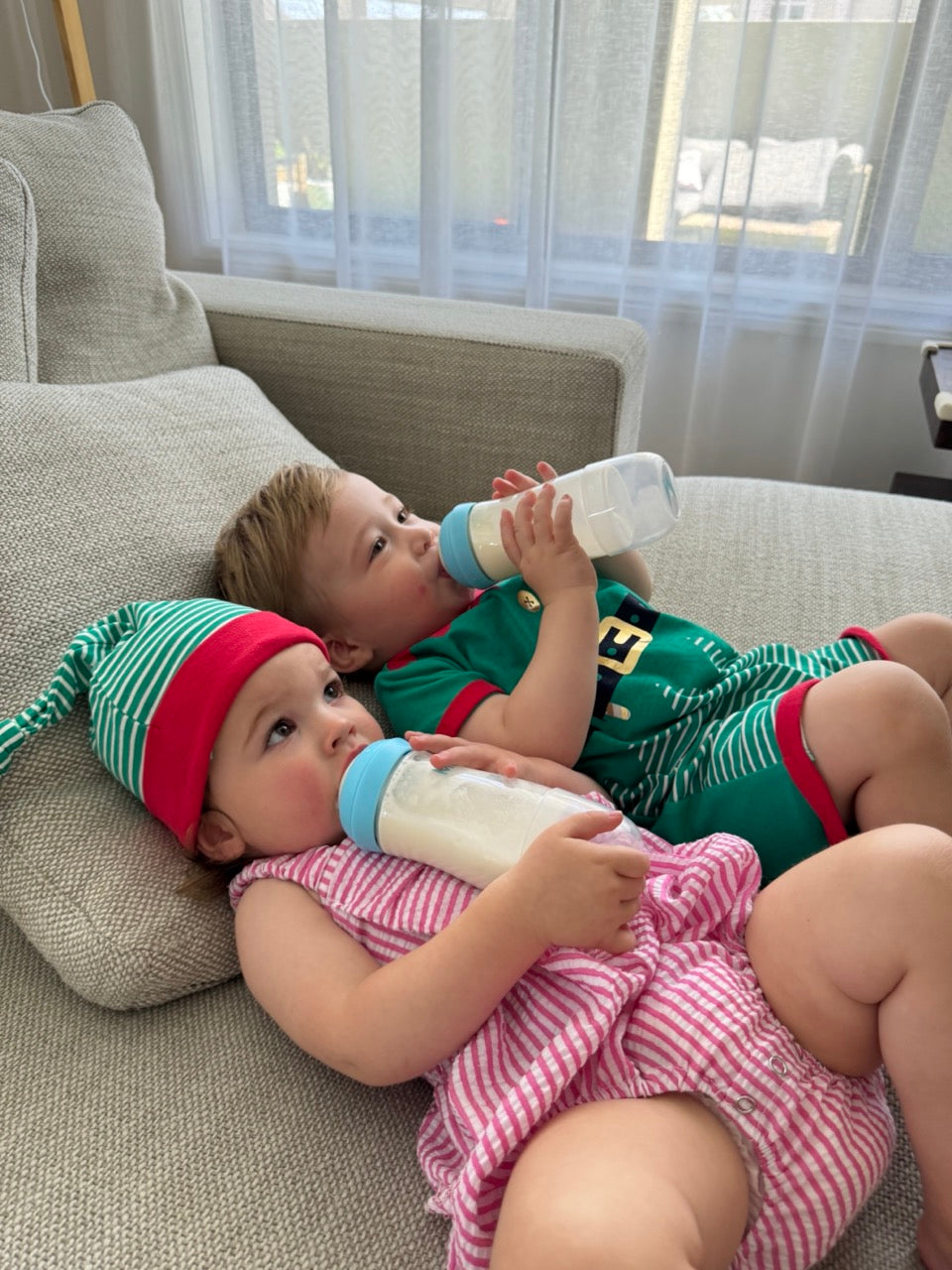When it comes to feeding your baby, especially if they have been diagnosed with a tongue tie, selecting the right baby bottle can make a significant difference in their comfort and feeding experience. Tongue tie, or ankyloglossia, is a condition where the strip of skin beneath the baby's tongue (the lingual frenulum) is shorter than usual, restricting the range of motion of the tongue. This condition can affect breastfeeding and bottle feeding alike. In this guide, we'll explore how to choose the perfect baby bottle for tongue-tied babies.
1. Anti-Colic Bottles:
Opt for baby bottles designed to reduce colic and gas. Babies with tongue ties may swallow more air while feeding, leading to discomfort. Anti-colic bottles with specialized vents can help minimize these issues.
2. Slow Flow Nipples:
Select bottles with slow-flow nipples. Tongue-tied babies may struggle with a fast flow, making it difficult for them to coordinate sucking, swallowing, and breathing. Slow-flow nipples ensure a more controlled milk flow.
3. Wide-Neck Bottles:
Consider using wide-neck bottles. These mimic the shape of the breast, making it easier for your baby to latch and feed comfortably. They can also help with the transition between breast and bottle.
4. Orthodontic Nipples:
Some bottles come with orthodontic nipples designed to promote proper oral development. They can be a good choice for tongue-tied babies as they encourage a natural latch and tongue positioning.
5. Latching Bottles:
Look for bottles specifically labeled as "latching bottles." These are designed to facilitate a deep and secure latch, which can be challenging for tongue-tied babies. They often have unique nipple shapes and textures to encourage proper latching.
6. Experiment with Nipple Materials:
Try different nipple materials like silicone and latex to see which one your baby prefers. Some babies with tongue ties may find one material more comfortable than the other.
7. Seek Medical Advice:
Always consult with a paediatrician or lactation consultant for personalised recommendations. They can assess your baby's specific tongue tie condition and provide guidance on the best bottle and feeding techniques.
8. Use a Breastfeeding-Friendly Bottle:
If you're trying to transition between breast and bottle, opt for a bottle designed to mimic breastfeeding. These bottles often have flexible, breast-like nipples that can be easier for tongue-tied babies to adapt to.
9. Bottle Size Matters:
Consider the size of the bottle. Babies with tongue ties may take longer to feed, so choosing a larger bottle can help ensure they get enough nourishment without having to feed too frequently.
10. Test for Comfort:
Ultimately, your baby's comfort is the most important factor. Try different bottles and nipple types to see which one your baby prefers. Look for cues like less fussiness during and after feeds, ease of latching, and effective milk transfer.
In conclusion, choosing the perfect baby bottle for tongue-tied babies involves considering factors like anti-colic features, slow-flow nipples, wide-neck designs, orthodontic nipples, latching bottles, and experimenting with nipple materials. Mooki is the perfect choice. Seeking professional advice and observing your baby's comfort and feeding behaviour will guide you in finding the best bottle for your little one's needs. Remember that every baby is unique, so it may take some trial and error to find the perfect bottle that suits your tongue-tied baby best.
Read more

Parenthood is an exciting journey filled with countless questions, and one of the most common ones that new parents often ask is, "Are baby bottles reusable?" As a mother, it's natural to want to ...

Introduction Parenting is a journey filled with questions, and one of them frequently centers around whether or not you should burp your baby after feeding. The simple answer is yes, and th...

